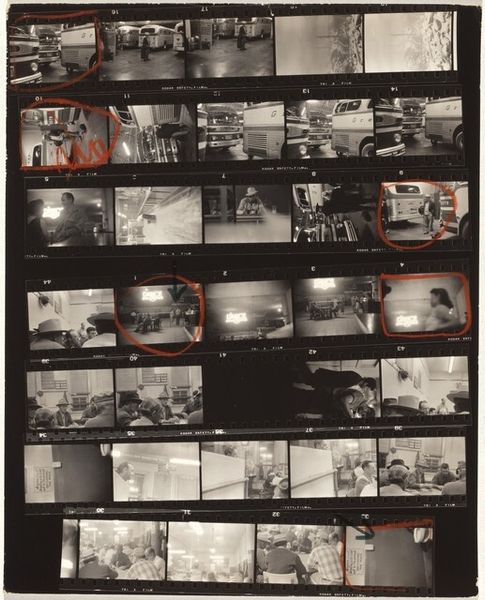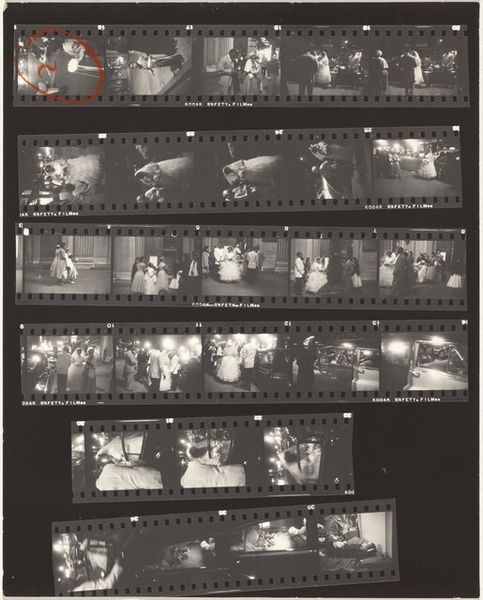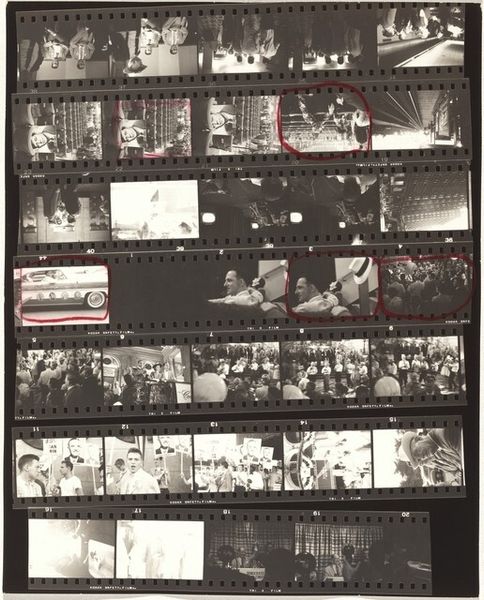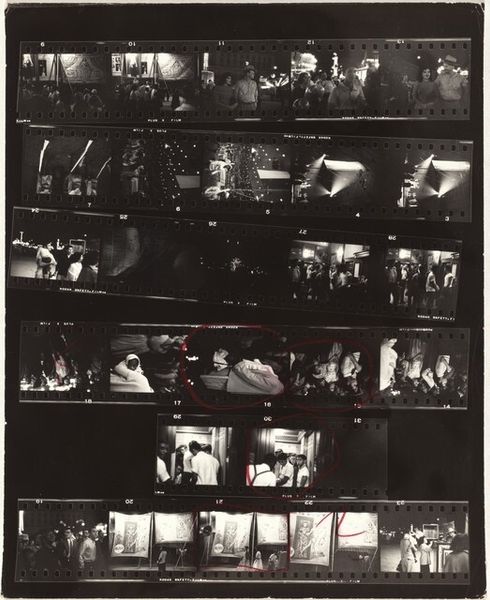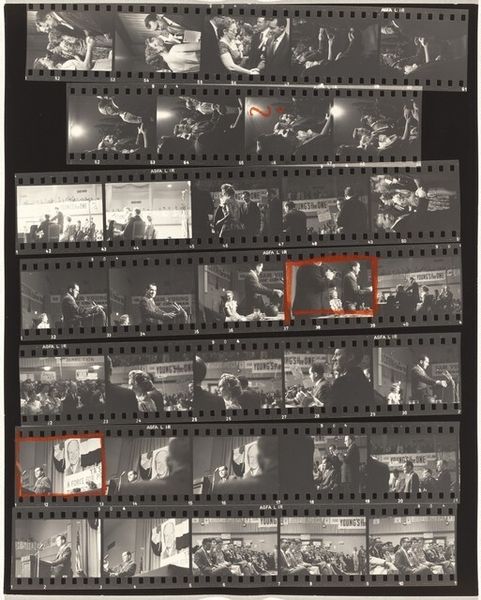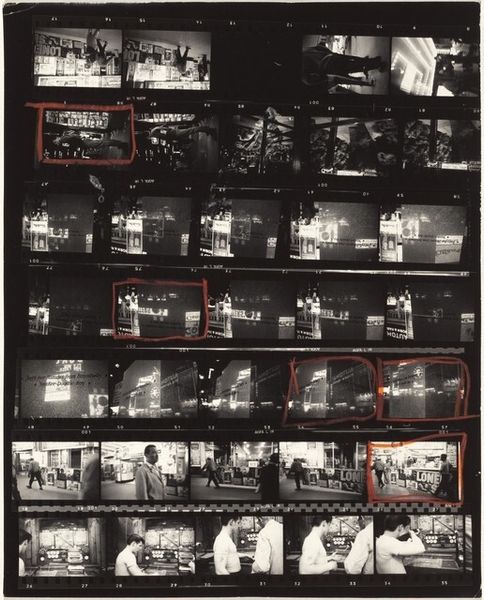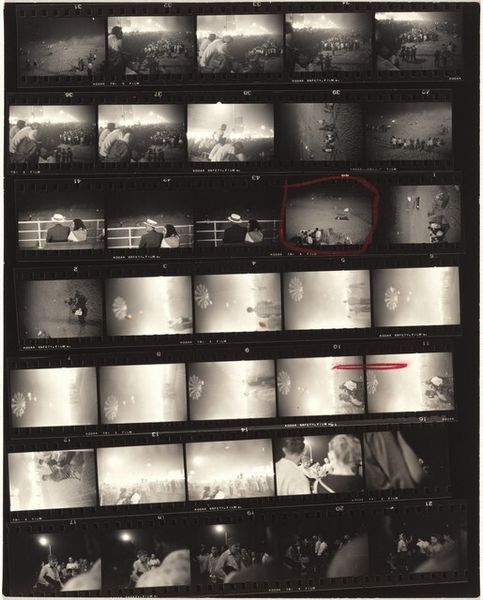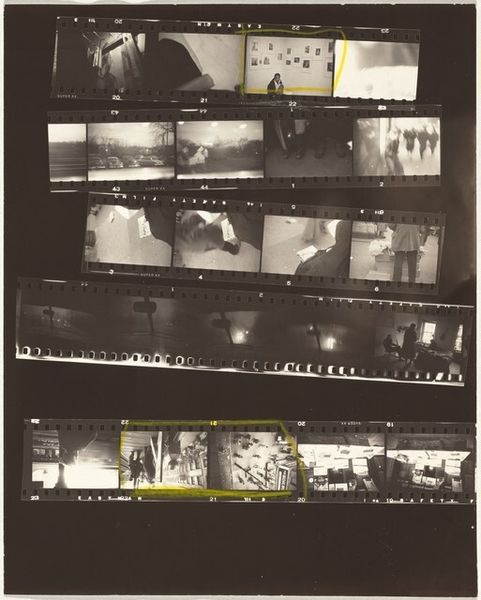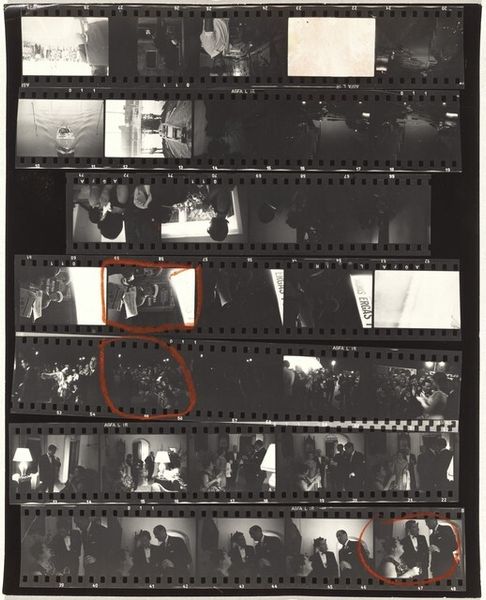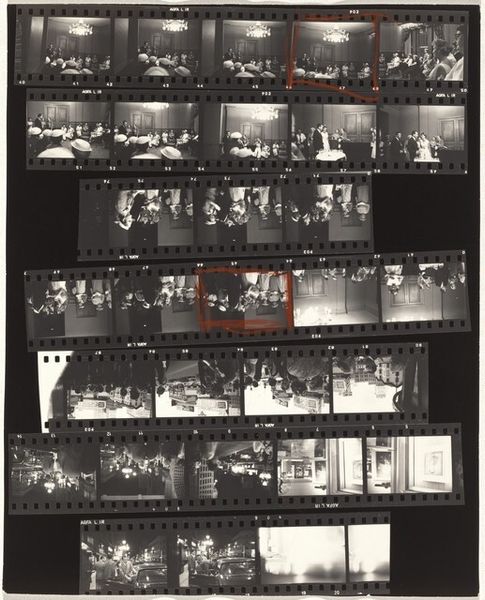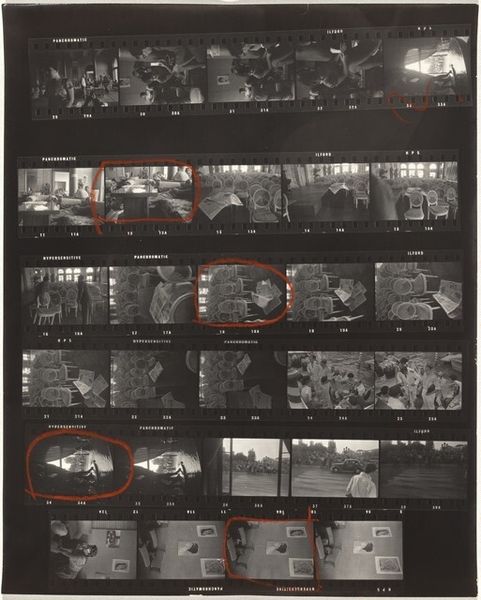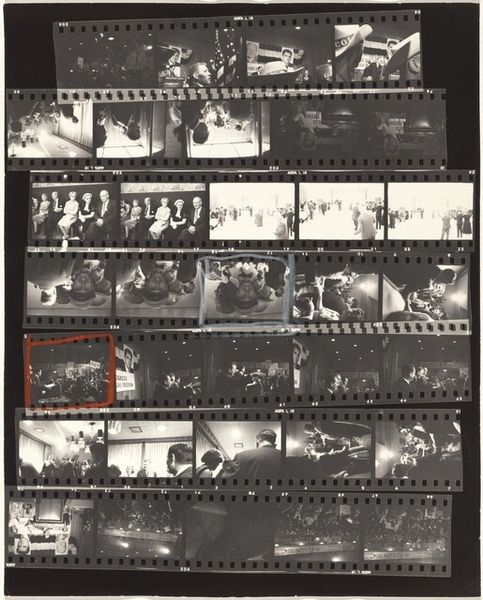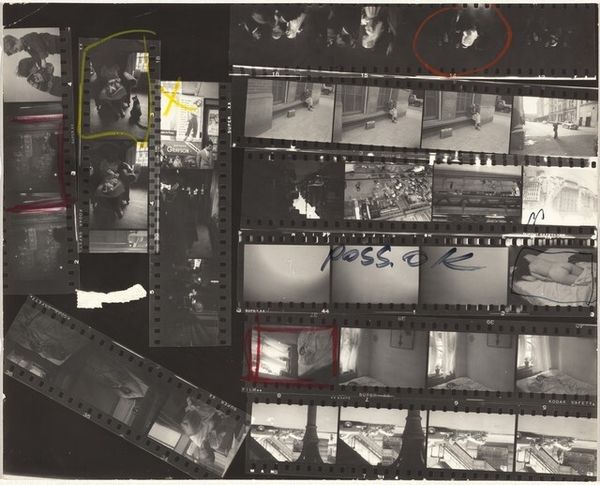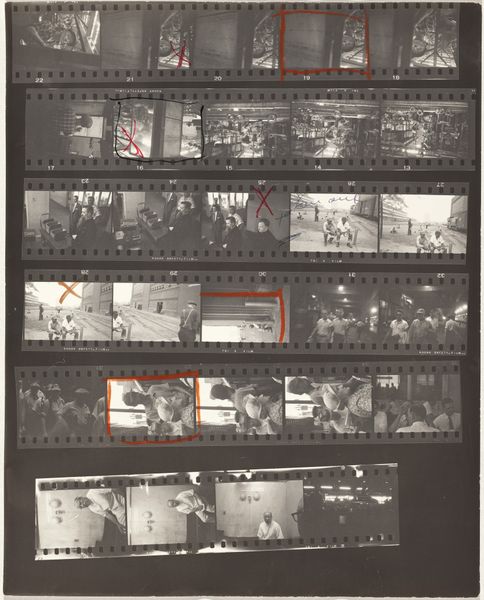
Dimensions: overall: 25.2 x 20.2 cm (9 15/16 x 7 15/16 in.)
Copyright: National Gallery of Art: CC0 1.0
Editor: So, this is Robert Frank's "Guggenheim 744--Indianapolis" from 1956, a gelatin silver print. It's presented as a contact sheet, almost like raw data. What strikes me is the slightly grainy texture and the unvarnished, almost melancholic view of urban life. What do you see in this piece, particularly thinking about its historical context? Curator: For me, the presentation *as* a contact sheet is key. Frank is revealing the photographic process itself. In the '50s, this countered the prevailing trends of highly staged, technically perfect photographs. It’s a move toward realism but also towards a democratizing of the image-making process, pushing back against established notions of art photography promoted by institutions. Do you notice the types of images he’s chosen to leave in and leave out, visible by the negatives on the sheet? Editor: Absolutely. There’s a lot of focus on everyday scenes—cityscapes, signs, people walking. It's interesting how the urban landscape becomes a subject, a character almost. It seems like he's exploring the pulse of American life, away from the idealized versions often presented. Were there other photographers taking similar approaches at that time? Curator: Yes, definitely. This relates to the broader Beat Generation's skepticism towards societal norms. Other photographers were similarly engaged in documenting the "real" America, but Frank’s European background gave him a particularly critical eye towards American culture, often highlighting a sense of alienation within the apparent prosperity. Considering that perspective, do you see this piece engaging with the socio-political issues of the time? Editor: I think so. Presenting this “raw” vision challenged the sanitized images and narratives propagated by advertising and the media. Seeing the mundane realities probably helped him cut through all that… revealing deeper meanings. Curator: Exactly. It shows how the selection, presentation, and very distribution of imagery became tools for Frank to subvert those prevalent representations, sparking meaningful discussions about what constitutes truth in visual culture. Editor: This has given me a lot to think about in how this piece plays such an active part in how photography exists. Curator: Indeed, and perhaps it sparks contemplation about photography's potential to reveal unseen social currents, past and present.
Comments
No comments
Be the first to comment and join the conversation on the ultimate creative platform.
